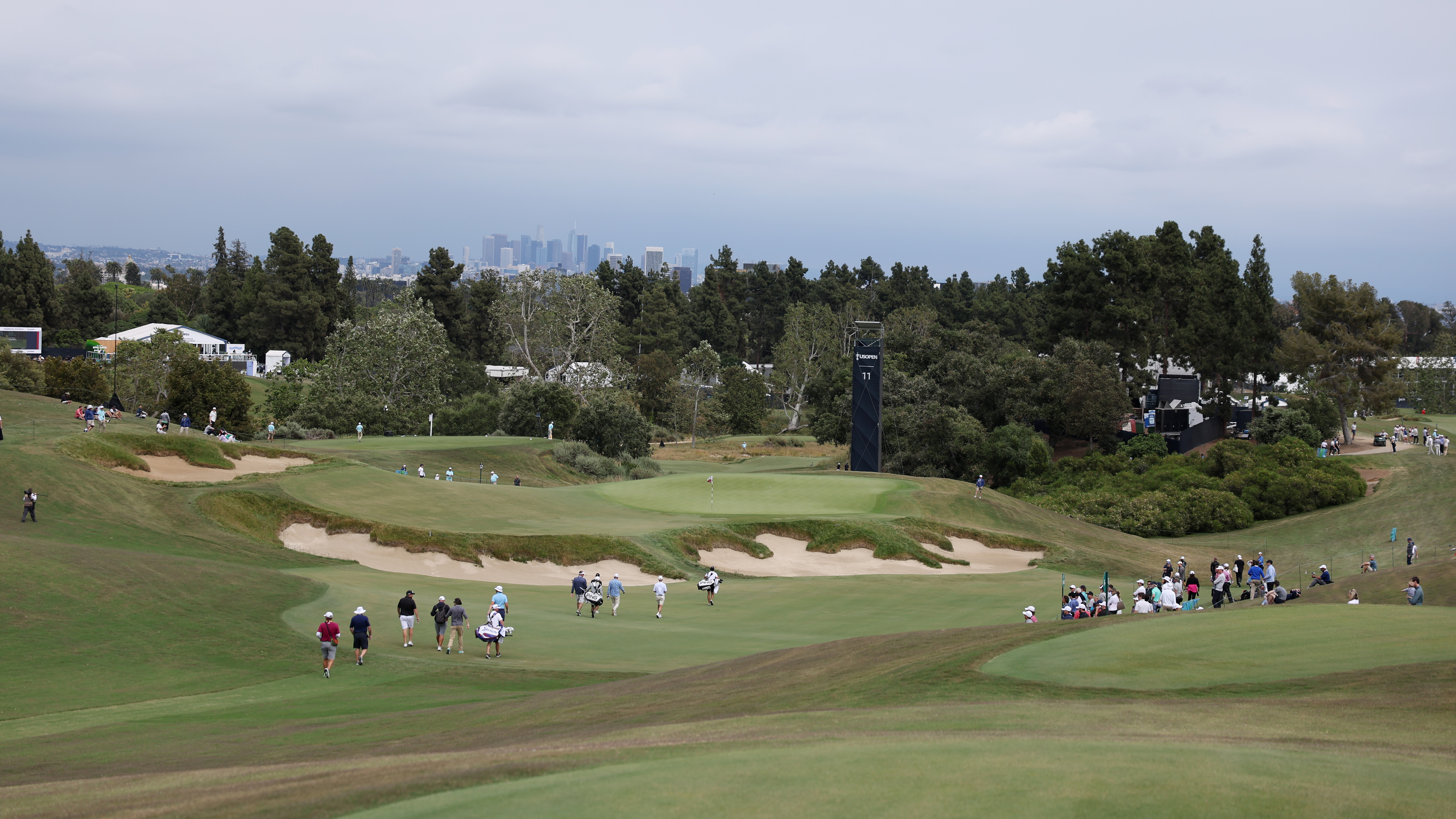
The par-3s at Los Angeles Country Club are expected to play a major role in determining the eventual winner of this year's US Open. Not since 1947 has an edition of America's national championship featured five short holes, and LACC's are a brilliant mixture of yardages.
Given the size of the tee and shape of the green, the 15th can play as little as 78 yards, while at the other end of the spectrum, the 11th is listed officially at a whopping 290 yards. That makes it the third-longest par-3 in the tournament's history, behind only the eighth at Oakmont that played 300 yards in 2007 and 299 yards in 2016.
Many of the game's biggest names have already been spotted hitting a fairway wood or long iron during the practice rounds, but how would the average golfer get on? Across different handicap groups, Arccos have crunched the numbers...
5-handicappers
According to Arccos data - which covers everything from how far average golfers hit the ball to how the stats of a PGA Tour pro compare to a scratch player - only 1.1% of golfers have a median driving distance of 280 yards or longer. That means most would struggle just to reach the 11th green, although they would be aided by the fact it plays downhill.
As for the stats of five-handicappers specifically, on a typical 300-yard hole they average 4.17 strokes which, when adjusted for US Open conditions, goes up by what Arccos estimates would be half a shot. The 11th is not far off 300 yards, so it's reasonable to assume the average five-handicapper would do well just to make a bogey.
10-handicappers
Unsurprisingly, the picture is bleaker for 10-handicappers, who don't hit the ball as far or as straight. On a 300-yard hole, they average 4.54 strokes, which becomes more than five strokes when roughly adjusted for the US Open.
That would then come down a little when taking into account the additional 10 yards this data has been retrieved using, but it would still result in an average of around five - a silky double-bogey.
15-handicappers
Finally, we have 15-handicappers. Players of this ability take 4.81 strokes on 300-yard holes before adding the assumed increase based on the set-up conditions at the third men's Major of the year.
It means a group of 15-handicappers would average more than a double-bogey if they all played LACC's par-3 11th. This sort of data provides further evidence, if it was needed, as to the toughness of Major championship set-ups, and how skilled the pros are.
However, for those tuning in who fall into one of the above categories, or even if not, there are sure to be more than a couple of the best players in the world who come unstuck at this bruising par-3, while defending champion Matt Fitzpatrick also warned of fireworks at the 15th should the USGA set it up to play less than 80 yards.
"I think that's amazing," Fitzpatrick said. "I would argue that at 78 yards, stood there with a lob wedge in your hand, you're going to be a little bit more intimidated than stood there with a 3-wood in your hand. I would probably say that's pretty truthful amongst everyone in the field."
For us mere mortals, there should be some comfort in that.







